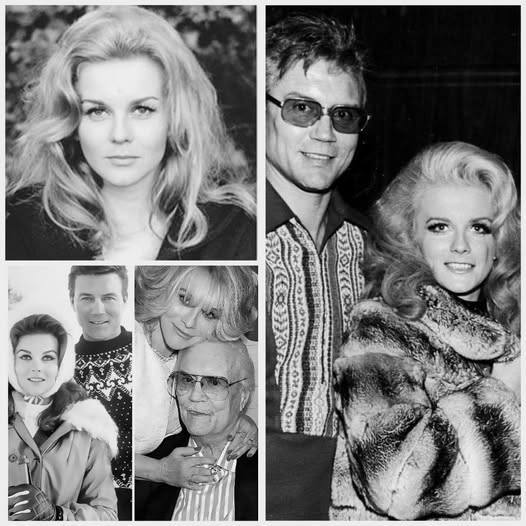She was gliding across the Las Vegas stage, glowing under golden lights, when Roger Smith first saw Ann-Margret—and everything changed. It wasn’t just her beauty or her fame that caught his heart. It was something softer, something hidden beneath the sparkle. He noticed the quiet sadness in her smile when the crowd stopped clapping. In that moment, he realized she wasn’t just a star—she was someone longing to be understood.
When they met backstage after the show, there weren’t sparks or grand moments. Just a feeling. Something real. Roger was already known from his role in 77 Sunset Strip. He had lived through fame, a divorce, and raising three kids. Ann-Margret, known for her roles in Bye Bye Birdie and Viva Las Vegas, was more careful with her heart. But Roger didn’t treat her like a celebrity. He saw the person behind the spotlight. Later, she would say, “He saw through everything, even the parts I tried to hide.”
Their relationship grew slowly. It wasn’t loud or flashy. It was built on kindness, patience, and respect. Roger had three children from his first marriage—Tracey, Jordan, and Dallas—and Ann-Margret welcomed them with open arms. She didn’t see them as a burden or a duty. She loved them like her own. The kids would later talk about how she made their home feel warm and safe.
Roger and Ann-Margret married on May 8, 1967, in Las Vegas. It was a simple ceremony, full of love and promise. She wore lace, and he looked at her as if nothing else mattered. In a city full of fast weddings and faster breakups, their love stood the test of time—for fifty years.
But life tested them early. In 1972, Roger was diagnosed with myasthenia gravis, a rare illness that slowly weakened his muscles. He struggled to walk, speak, and do the things he once did with ease. Ann-Margret didn’t walk away. She turned down big movie offers and stayed close to care for him. She became his strength.
People would ask her how she managed. She’d smile and say, “That’s what love does.” When he couldn’t move, she helped him. When he had trouble speaking, she listened with all her heart. Others might have seen what she gave up—but she focused only on what she still had: the man she loved.
Before he got sick, Roger had been her quiet support. He helped manage her career, shielded her from the darker side of show business, and believed in her when she doubted herself. She called him her hero—not because he stood in the spotlight, but because he stood beside her when no one else saw.
Even as his health declined, he kept watching her perform from the side of the stage, eyes filled with the same love he had from the start. After every show, she’d run to him, whispering into his ear, the crowd and lights forgotten.
They never had children together, but their family was full. Ann-Margret stayed close to Roger’s children, attending their milestones, giving advice, and being a steady, loving presence. To them, she wasn’t a “stepmother”—she was simply their Ann-Margret, the one who never left their side.
When Roger passed away on June 4, 2017, at 84, she didn’t make a big public statement. Just a quiet message and then silence. At his memorial, she wore black—not out of tradition, but because her world had changed.
Even now, she still wears a tiny gold necklace with his initials, tucked beneath her clothes. If someone notices and asks, she just smiles. There’s no need for words. Their love was never for show. It was real. And in her heart, it still is.✍️
